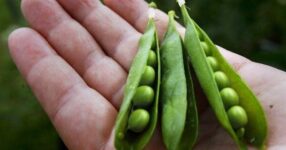
Here’s what to plan when iin your fall vegetable garden | Home/Garden
It’s time to get ready for fall vegetable gardening.
We know, we know: It’s still hot outside. Falling leaves and crisp autumn air feel an eternity away.
But for some of our favorite cool-season veggies, there are narrow windows for planting and growing. So if you want to harvest a bountiful crop of homegrown produce this fall, it’s wise to start planning — and, depending on what you want to grow, planting — now.
“But wait!” you say. “My summer vegetable plants are still producing. Do I have to pull them up?”
Of course not. Many summer vegetables are still churning out produce — and probably will for a while longer. In fact, if you grew okra and eggplant this summer, you can keep these plants going all the way up to our first killing freeze. Just cut them back to knee height sometime soon, and they’ll continue to grow and produce fruit through the fall.
Limited on space? You may be eager to make room for new plantings right now, and that’s fine. Otherwise, leave any crops that are still thriving alone and begin working on your fall garden in another area. As summer plants peter out over the next few weeks, you can come back and put something in their place. Staggering your plantings is a good idea anyway. Plant a few vegetables now and some more later, and you’ll set yourself up for a steady supply of fresh produce this fall.
Your vegetable garden
It’s important to remember that a vegetable garden can be big or small, grown in the ground or in containers. (Head to the LSU AgCenter website to read last week’s column, which detailed the ins and outs of container gardening.)
The main thing you need is sunlight. Vegetables need full sun — meaning six to eight hours of sunlight a day — for the best production. If your garden is shadier, don’t despair. Leafy vegetables such as lettuce, broccoli and cabbage can all get by with less sunshine.
Veteran and novice gardeners alike can benefit from perusing the LSU AgCenter Louisiana Vegetable Planting Guide before pulling on the gardening gloves and ripping open seed packets. A free, comprehensive resource, this guide is chock full of information for the home vegetable gardener. It contains our horticulturists’ advice on what crops to grow, when and how to plant them, fertilization and more. You can view the guide online at tinyurl.com/VegetablePlantingGuide.
In the most recent edition of the guide, a new feature is separate planting date suggestions for both north and south Louisiana. Dates for the two regions are often the same but vary for some crops by up to a month.
A few exceptions aside, you can start sowing your fall vegetable crops now. Be sure to stick to the dates listed in the planting guide. You may want to draft a staggered planting schedule based on when recommended planting windows open and close and, if you are still hanging onto a few summer plants, when space will become available in your garden.
Dates to keep in mind
September: Statewide, plant English peas and pumpkins by Sept. 15 and bush-type snap beans by month’s end. (A note about pumpkins: September-planted pumpkins won’t be ready in time for Halloween. Next year, remember to plant in June or July for a Halloween harvest.) In south Louisiana, cucumbers, Irish potato pieces and summer squash need to be planted by midmonth while celery plants can go in the ground through Sept. 25.
October: Across Louisiana, broccoli, Brussels sprouts (by Oct. 15 in north Louisiana), cauliflower (by Oct. 15 in south Louisiana), Chinese cabbage, Swiss chard (by Oct. 15 in north Louisiana), kale, kohlrabi, lettuce, radishes, rutabagas (by Oct. 15), turnips for root production and collard, mustard and turnip greens can be planted this month. In north Louisiana, carrots and celery can be planted till Oct. 15 and kale through Oct. 31.
November: Beets and spinach should be planted by Nov. 15 statewide. Cabbage and garlic can be planted through the end of the month. South Louisiana residents have until Nov. 10 to plant mustard and turnip greens and until Nov. 15 to plant carrots, kale and lettuce.
Shallots can be planted anywhere in Louisiana anytime between now and Feb. 28.
Don’t forget to save a bit of space in your garden for some herbs to complement your homegrown veggies. Several herbs can flourish in the cool season, including anise, chives, cilantro, dill, fennel, oregano and parsley.



